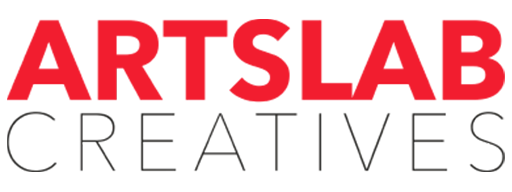Paid media campaigns have become essential for businesses looking to grow and thrive in the ever-changing digital landscape. As we step into 2025, investing in these campaigns isn’t just a good idea, it’s a necessity. But where do you start, and what should you know to make the most out of your investment? In this blog post, we’ll dive deep into the value of paid media, how to get started, and the cutting-edge strategies that can make your campaigns more effective than ever before.
In this article:
Introduction to Paid Media Campaigns
How to: Launch Your First Paid Media Campaign
Tracking Success in Paid Media Campaigns
Introduction to Paid Media Campaigns
In simple terms, paid media refers to any form of digital advertising where you pay to promote your message, product, or service. Unlike organic content, which grows through search engine optimization (SEO) or social media engagement, paid media gives you the ability to target a specific audience and amplify your reach almost instantly.
In 2025, paid media is more sophisticated than ever. With advancements in artificial intelligence (AI) and machine learning, platforms like Google Ads, Facebook Ads, and TikTok Ads are leveraging data to make sure your ads reach the most relevant users. What was once a broad approach to advertising has now evolved into highly targeted, personalized campaigns that can deliver impressive results.
Different Types of Paid Media
There are several types of paid media, and each offers its own set of advantages depending on your marketing goals:
- Search Engine Ads (Google Ads): These ads appear on search engines like Google when users search for specific keywords. They are highly effective because they target people who are actively looking for your products or services.
- Social Media Ads (Facebook, Instagram, TikTok): Social media platforms offer advanced targeting options, allowing you to reach users based on interests, behaviors, and demographics. This makes them ideal for building brand awareness and driving traffic.
- Display Ads: These include banner ads and other visuals that appear on websites across the internet. They help increase visibility but may require more strategic targeting to avoid banner blindness.
- Video Ads (YouTube): Video content is one of the most engaging formats. Platforms like YouTube allow businesses to run targeted video campaigns that can increase engagement and drive action.
Why Does Paid Media Matter?
Paid media is a valuable investment because it helps you reach people who might not find your business otherwise. It allows you to position your brand where your target audience is most likely to engage, and it gives you the ability to control and optimize your campaign in real-time. The ability to measure results and track conversions makes paid media campaigns an indispensable tool for businesses of all sizes.
For instance, let’s look at Google Ads. Businesses that use Google Ads see a significant increase in online traffic. These ads target people who have already shown intent through their search behaviors, which means they are more likely to convert.
- Paid Ads Provide Immediate, Measurable Results
One of the biggest advantages of paid media is that it offers instant visibility and measurable returns. Unlike organic marketing efforts that take months (or even years) to build momentum, paid advertising delivers results in real-time.
- Precision Targeting: Reaching the Right Audience at the Right Time
Paid media is not just about gaining visibility; it’s about getting in front of the right people when they’re ready to take action. With advanced targeting options, you can reach decision-makers and high-intent buyers, use behavioral data to refine targeting and optimize based on demographics, interests, and intent.
- Scaling Growth with Paid Media While Staying Cost-Efficient
Many businesses hesitate to invest in paid media due to budget concerns, but when executed correctly, paid ads can be one of the most cost-effective marketing strategies. Scaling growth with paid media is highly cost-efficient when done right. Unlike sales teams, paid ads run 24/7 and scale with your budget. AI-driven bidding minimizes wasted spend by targeting high-converting audiences, while retargeting lowers acquisition costs by focusing on engaged users, maximizing ROI.
- Diversifying Ad Spend Across Emerging Channels
Diversifying ad spend is crucial in 2025, relying only on Google and Facebook Ads won’t cut it. Expanding to TikTok Ads (engaging younger audiences), CTV Ads (reaching streamers on platforms like YouTube and Netflix), LinkedIn Ads (ideal for B2B targeting), and influencer collaborations (boosting engagement and trust) ensures broader reach and mitigates risk.
Success Stories: Airbnb
Airbnb’s “Made Possible by Hosts” campaign was a masterclass in paid media strategy, utilising Google Ads, Facebook, Instagram, YouTube, and programmatic advertising to target travelers and potential hosts. Using behavioral targeting and retargeting ads, Airbnb personalized ad creatives based on user behavior, showing dream-like getaways to those searching for vacations and income-driven messages to potential hosts. The campaign’s A/B-tested video ads featured real guest stories, evoking emotion while AI-driven optimizations ensured the right audiences saw them. As a result, Airbnb saw a significant increase in bookings and host sign-ups, proving how precision-targeted paid media can drive real business growth.
How to: Launch Your First Paid Media Campaign
Getting started with paid media can seem overwhelming, but breaking it down into manageable steps can simplify the process. Here’s a basic roadmap to get you started:
- Define Your Goal: What do you want to achieve with your campaign? More traffic, higher conversions, or better brand awareness? Setting clear objectives will help you stay focused and measure success.
- Choose Your Platform: Decide where to run your ads — Google, Facebook, Instagram, or another platform based on your target audience.
- Set a Budget: Determine how much you’re willing to spend on ads. Start with a small budget, and scale as you see results.
- Create Your Ad: Craft your message and design your visuals. Make sure the ad aligns with your branding and resonates with your audience.
- Launch and Monitor: Run your campaign, but keep an eye on its performance. Make adjustments based on the data you gather.
Tracking Success in Paid Media Campaigns
Measuring the effectiveness of your paid media campaign is crucial. The key metrics include click-through rates (CTR), conversion rates, and cost-per-conversion. By analyzing these metrics, you can adjust your campaigns to improve performance.
Tools and Analytics to Track ROI
Tools like Google Analytics and Facebook Insights allow you to track the performance of your ads, measure ROI, and gain insights into customer behavior. This data is invaluable for optimizing campaigns.
How to Optimize Based on Data
Once you’ve collected enough data, use it to refine your ads. For example, if you find that certain ad creatives perform better than others, consider using those more frequently. Similarly, if you notice certain keywords aren’t driving conversions, it’s time to adjust your targeting strategy.
The Future of Paid Media
What is Programmatic Advertising?
Programmatic advertising is the automated buying and selling of digital ads. Using algorithms and real-time bidding, programmatic platforms place ads in front of the most relevant audience at the best possible time.
The Role of AI in Optimizing Paid Media Campaigns
AI plays a significant role in optimizing paid media campaigns. By analyzing large sets of data, AI can identify patterns and make predictions about which ads will perform best. This results in smarter campaigns that are more likely to convert and can optimize themselves over time.
For example, Google Ads uses machine learning to predict which keywords are likely to drive the most conversions, allowing you to adjust your bids and ad content accordingly.
Conclusion
Paid media campaigns are essential for any business looking to grow in 2025. With the ability to target specific audiences, measure results, and optimize campaigns in real-time, paid media is a powerful tool for achieving business success. Whether you’re just getting started or looking to improve your current strategy, understanding the value of personalized ads, precision targeting, and the role of AI will help you create more effective campaigns.
Need expert advice on setting up/optimizing your paid media strategy, we’re here to help. Get in touch with us today to take your paid media marketing efforts to the next level.







